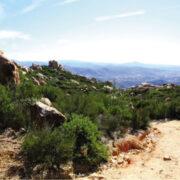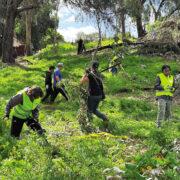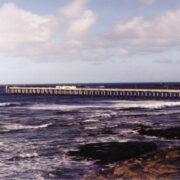State water board approves new conservation regulations
AS California enters its fourth year of drought, Gov. Jerry Brown and legislative leaders on Thursday, March 19 proposed legislation to accelerate more than $1 billion in drought-relief spending.
“We need to get the money out the door now for shovel-ready projects and existing water programs that only need funding to get started,” said Senate President Pro Tem Kevin de Leon, according to Associated Press. “No delay. No red tape.”
The two-bill package includes $272 million for safe drinking water and water recycling, $128 million for direct assistance to the hardest-hit workers and communities and accelerates $660 million for flood protection in rural and urban areas.
Brown said the drought has brought to attention questions regarding how California uses water and will require state residents to figure out innovative solutions.
“Growing a walnut or an almond takes water. Having a new house with a bunch of toilets and showers takes water,” Brown said. “So how do we balance use and efficiency with the kind of life that people want in California?”
The spending measures will require a majority approval from the state Legislature.
New regulations
Brown’s proposal follows a measure approved Tuesday, March 17, by the State Water Resources Control Board to expand water usage restrictions.
The new rules will ban food and drink establishments from serving water unless customers request for it, require hotels and motels to allow guests the option of declining the daily washing of towels and linens, and ban Californians from watering lawns within 48 hours after measurable rainfall.
Furthermore, cities, counties, private companies and water districts will be mandated to limit lawn watering to two days per week if they are not already doing so; however, water providers that already restrict lawn watering, whether it is set to three or more days per week, are allowed to continue doing so without tightening limitations to two days per week. Water agencies will also be required to inform customers about any leaks detected on their property.
“There have been some heroic efforts that people have taken, but we are not seeing the level of stepping up and ringing the alarm bells that the situation really warrants in most cases,” Felicia Marcus, chairwoman of state Water Resources Control Board, said Tuesday, March at a meeting in Sacramento.
“We’re going to need to go further if it doesn’t rain,” she added.
Penalties for violating these rules, which can cost up to $500, will be left to the discretion of local cities, counties and water districts. So far, however, only a few have issued fines.
On Tuesday, the water board also decided it will begin monitoring how agencies enforce the regulations through the number of citations and warning letters issued, according to the news agency.
The Associated Press reported wide disparities in enforcement, with Los Angeles issuing just two $200 fines in a service area of approximately 4 million, to Santa Cruz where more than $1.6 million in water waste penalties have been levied.
Critics said that the new rules, which will go into effect April 15, are a step in the right direction. But they say without further enforcement, they are not enough to deal with the water shortages if the drought continues beyond this summer.
Last year, Gov. Jerry Brown called on California residents to voluntarily reduce their water consumption 20 percent when he declared a drought emergency. But average monthly water use has declined 11 percent since the state imposed restrictions in July, according to surveys of water suppliers.
“At this point we are failing,” said Conner Everts with non-profit organization the California Environmental Water Caucus. “At what point do we accept that this might be the fourth year of a 10-year drought – and plan for that?”
The new lawn watering limits are opposed by golf course owners, who told the board Tuesday that the regulation could be counterproductive and affect their ability to maintain attractive landscapes, which they say are already water efficient.
“The reality is, the way golf courses are set up, if you get focused on two- or three-day restrictions, they will overwater on those days and not conserve water,” Craig Kessler, a spokesman for the Southern California Gold Association, said at the meeting, according to The Wall Street Journal.
Other opponents of the state water board’s decision say these conservation efforts yield minimal results.
“The message they’re giving is, ‘Oh yeah, it hasn’t been raining but let’s just save a little water here and there,’” Sejal Choksi-Chugh, interim executive director of water advocacy group San Francisco Baykeeper, told the San Francisco Chronicle. “This is small potatoes in terms of water conservation.”
Choksi-Chugh and other critics have advocated for conservation via outdoor water usage, which constitutes up to half of residential consumption.
Implications of a limited water supply
California’s agricultural industry, which employees approximately 400,000 farmers and farm workers, has already been hit particularly hard by the drought. Last year, it saw a loss of 17,000 farming jobs last year and an estimated $2.2 billion, according to a study from University of California, Davis.
Mike Wade, executive director of the California Farm Water Coalition, said many job losses are due exclusively to water shortages and that some rural areas are experiencing unemployment rates between 24 to 40 percent.
“We may see more land left unplanted as producers concentrate their water resources to maintain what they can,” said Brian Fuchs, a climatologist with the National Drought Mitigation Center in Lincoln, Neb., according to USA Today. “The cattle industry will be impacted as grazing and forage for animals becomes harder to find.”
Last week, NASA scientist Jay Famiglietti said the state has about one year of water remaining in its reservoirs and that rationing should begin immediately.
The possible shortage of tap water is leading to a number of propositions, including desalination and the treatment and reuse of wastewater and stormwater.
“For agriculture, desalination is so far out of the range of cost that no one really even thinks about it. But over time, we will see more and more desalination in those places with no other options, as we see in many Middle East and Gulf state countries,” said Peter Gleick, a scientist and president of research organization Pacific Institute, according to USA Today.
California currently has 11 desalination plants, with another 16 proposed. One of these was recently built in the town of Cambria, where water officials took out a $13-million loan for the plant.
Resorting to groundwater is also another option, although it is a limited method.
“If we include the gross overpumping of groundwater, it may take decades to rebuild groundwater reserves, and in some places, it will be impossible because of land subsidence that has destroyed the aquifers,” Gleick said, according to USA Today.
Rainfall has been significantly sparse in the state during its ongoing drought.
“Even if normal precipitation begins to fall, it will take a few years to overcome the massive deficits we’ve been running,” Gleick said.
The dangerously low snowpack levels in the Sierra Nevada, which could post a record low for the past 25 years, create an increased risk of wildfires in California and throughout the West.
In the first two and a half months of 2015, fires in the golden state have burned more than 3,200 acres, which is more than quadruple the average, according to Ken Pimlott, director of California’s Department of Forestry and Fire Protection.
“The lack of snow means more exposed fuel load that can dry out, given the warm temperatures that have been commonplace for so many this winter,” Mark Svoboda, a climatologist with the drought mitigation center, told USA Today.
Members of the state water board said they need to look at setting permanent conservation rules, fearing dry conditions could become normal in California.
“In our emerging climate regime with a decreased overall Sierra snowpack and more extreme weather including drought, it’s essential,” water board scientist Max Gomberg said Tuesday.
(With reports from Associated Press, San Francisco Chronicle, The Wall Street Journal, and USA Today)
(www.asianjournal.com)
(LA Weekend March 21-24, 2015 Sec. A pg.5)







